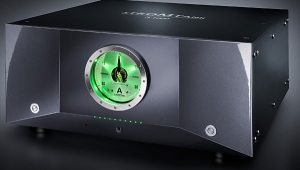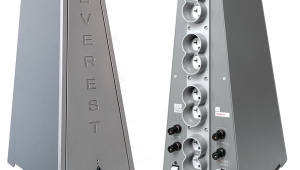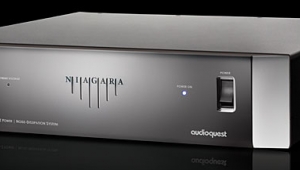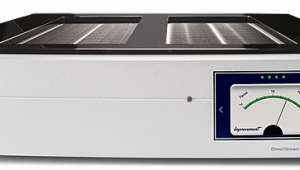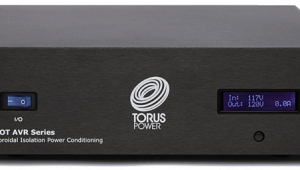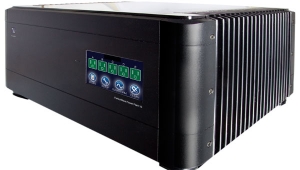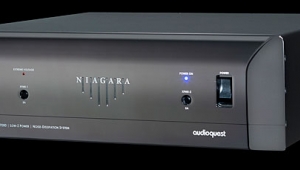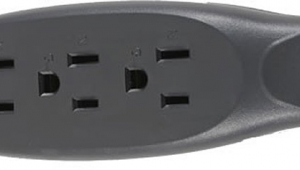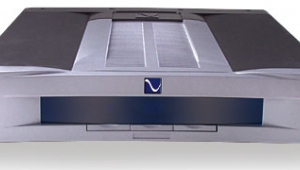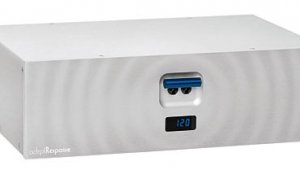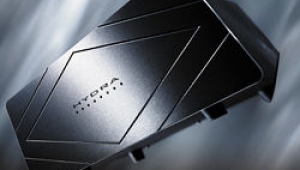| Columns Retired Columns & Blogs |
AdeptResponse aR12-TS, January 2012
Brian Damkroger wrote about the AdeptResponse aR12-TS in January 2012 (Vol.35 No.1):
When I reviewed Audience's original Adept Response power conditioner, in the April 2007 issue, I was impressed. Audience's approach of combining filtering, power-factor correction, and isolation made big improvements in the sound of my system, even though I already had a dedicated subpanel, optimized AC wiring, and top-quality wall outlets, and high-end power cords. The Adept Response handily outperformed my then-reference power conditioners, as well as any others I'd tried up that point. By the time I'd finished the review, my reference system had a new component: the Adept Response, later renamed the AdeptResponse aR12.
Since then, Audience has made several major improvements in the aR12 that have led to the release of a new subseries, suffixed "-TS." The changes are: a new, larger ground with connections welded rather than bolted; Teflon capacitors throughout; and the use of monocrystal copper wire on the Teflon caps. The resulting model, the aR12-TS, retails for $8995 with Audience's latest AC cord, the PowerChord e, or for $10,545 with their top-of-the-line cord, the Au24powerChord e. The original aR12 continues in the line, upgraded with the new ground plane and welded connections but sans Teflon caps and monocrystal wire, for $4995.
Each upgrade is claimed to contribute to improved performance. "Teflon is a far better insulator than other capacitor materials," states Audience's John McDonald. "The benefits are increased precision and focus, and a further reduction of the haze that's associated with powerline RF noise." He also says that the primary benefit of the new ground plane and welded connections is a lower DC resistance, which he credits with the aR12-TS's claimed preservation of dynamic transients, and describes as "one of the aR12-TS's state of the art characteristics."
Listening (see my Sutherland review elsewhere in this issue for my review system): I'd found a lot to like in the original aR12. Even with my optimized power-delivery system and top-notch gear, I'd noticed that the aR12 always improved the sound's dimensionality: Soundstages opened up in all dimensions, and images became more solid and tangible, particularly with respect to depth. I also noticed that the aR12 stripped away a layer of background smog, making audible finer details and more subtle ambience cues. With the aR12 I could also now hear finer shadings of microdynamics, and all dynamic transients, whether at the soft or loud end of the scale, were bigger and clearer.
The aR12-TS did everything the original did, and more. Most immediately noticeable was an improvement in dynamics. Listening to Monty Alexander's Facets (LP, Concord Jazz, CJ108), I noticed that his piano's initial transients were sharper and clearer with the aR12-TS, and that notes cut more cleanly through the air as they rose in pitch, just as they do live. Similarly, the sounds of Jeff Hamilton's sticks repeatedly striking his cymbals during rolls were much more audible with the 'TS in the system. Those impacts took on a physical presence, too: I could clearly make out the small area of the cymbal where the stick struck, then hear the sound propagate outward, even amid the near-continuous shimmer of cymbal sound filling the air around it.
Background sounds such as shuffling feet, players' breathing, and quiet verbal asides were audible throughout this recording with the aR12-TS, instead of just between songs. I had more of a sense of Alexander sitting at and playing the piano, rather than just the piano itself—the latter was how it felt whenever I removed the aR12-TS from the system. Ray Brown's bass was flat-out jazzier with the aR12-TS in the system, with more of his characteristic bounce and snap. Even the fine surface noise of my nearly perfect pressing was clearer and more audible through the 'TS.
Through the aR12-TS, the audience on "Just By Myself," from Greg Brown's The Live One (CD, Red House RHR CD 78), was not a generalized crowd noise but a collection of individuals and their voices. Brown's movements around the mike were more obvious, and made the performance feel more intimate and alive. His guitar, too, took on an added harmonic richness and complexity with the aR12-TS in the system, and, again, I was more aware of the fine, low-level details of the audience and background sounds throughout this track.
The differences were even more dramatic when I took the aR12-TS out of the system. In "2 Kool 2 Be 4-Gotten," from Lucinda Williams' classic Car Wheels on a Gravel Road (CD, Mercury 314 558 338-2), Donald Lindley's drums weren't nearly as explosive without the 'TS. Williams's voice lost a bit of its incredible in-the-room immediacy, the soundstage shrank in all dimensions, and even the images, so clear and sharply bounded through the aR12-TS, now seemed a little vague or blurry at the edges.
Those are just a few examples. The improvements that the aR12-TS made in my system's sound were consistently audible and unfailingly profound—easily of the magnitude of making a significant upgrade to any major conventional component in the system. With the aR12-TS in the system, dynamic transients expanded, resolution of low-level and inner detail significantly improved, soundstages opened up, and images became more dimensional, more tangible, more sharply bounded. Instruments and voices took on additional harmonic richness and intimacy, and performances in general came to life. No matter how good the system or any particular component sounded with no AC conditioning or even with the original aR12, it sounded noticeably better with the aR12-TS in the system.
Bottom Line: The Audience aR12-TS is the best power conditioner I've heard. The -TS version is undeniably better, but at $8995 for the aR12-TS, or $10,545 with optional Au24powerChord e, it's a lot more expensive. Which is right for you will depend on your system, your checkbook, and where else you might spend the $4000 or $5550 difference in price. If you already have an aR12, give the new model a listen. If not, give all three a listen. Either way, you'll be amazed and impressed by the improvement in your system's sound. Highly recommended.—Brian Damkroger
- Log in or register to post comments
